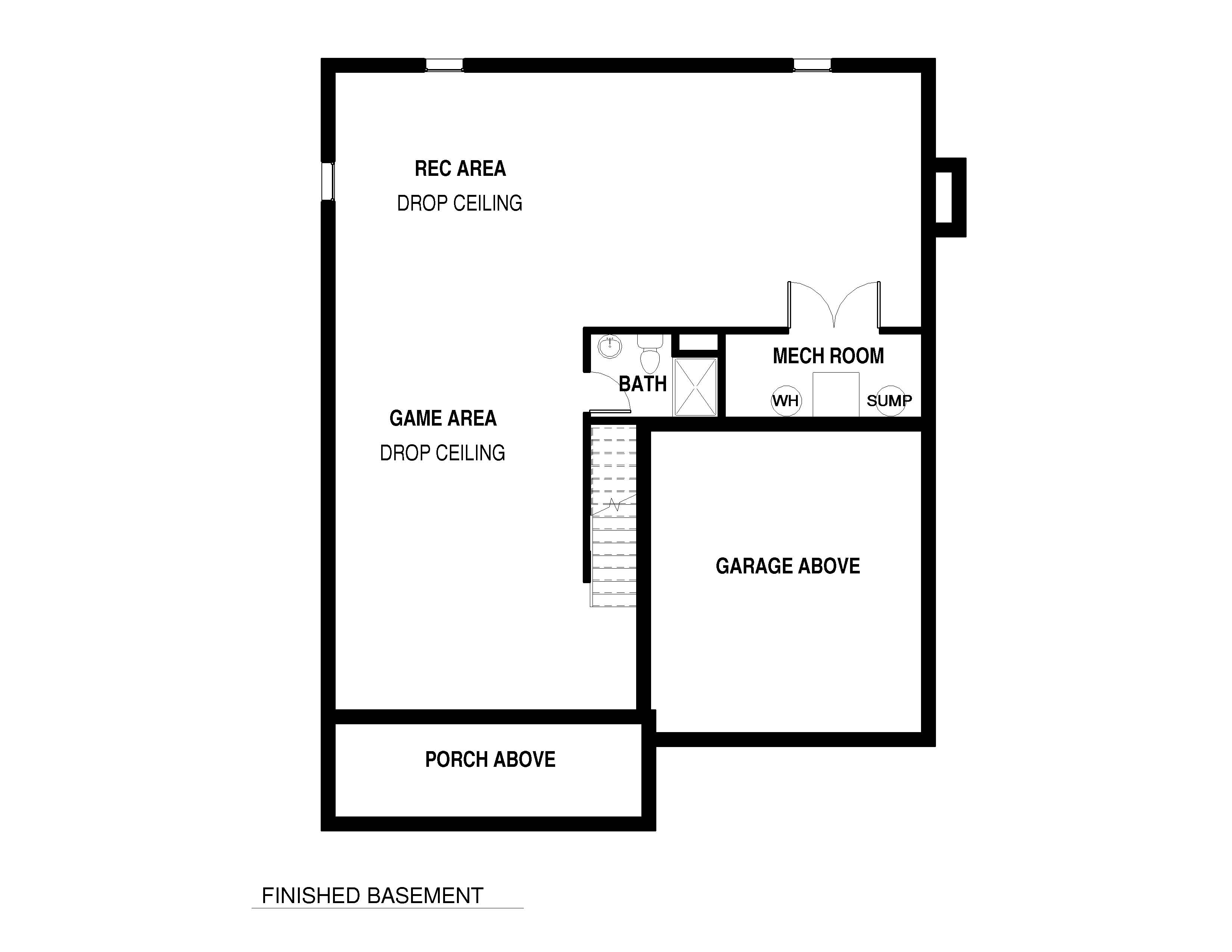Designing Basement Bedrooms for Comfort and Functionality: Floor Plans With Basement Bedrooms

Transforming a basement into a comfortable and functional living space requires careful consideration of factors that contribute to a healthy and enjoyable environment. A well-designed basement bedroom should prioritize comfort, functionality, and aesthetics.
Insulation and Ventilation
Proper insulation and ventilation are crucial for creating a comfortable and healthy living space in a basement bedroom. Insulation helps to regulate temperature, preventing extreme fluctuations that can make the space uncomfortable or even unhealthy. Adequate ventilation removes moisture and stale air, minimizing the risk of mold growth and creating a fresh and breathable environment.
- Insulation: Insulating the basement walls and ceiling helps to prevent heat loss in the winter and heat gain in the summer, creating a more comfortable and energy-efficient space. Common insulation materials include fiberglass batts, spray foam, and rigid foam boards. The type of insulation used will depend on the specific needs of the basement and the local climate.
- Ventilation: Adequate ventilation is essential for removing moisture and stale air, which can contribute to mold growth and poor air quality. Ventilation can be achieved through the use of exhaust fans, windows, or a combination of both. Exhaust fans should be installed in areas where moisture is generated, such as bathrooms and kitchens. Windows should be opened regularly to allow for fresh air circulation.
Flooring Options
Choosing the right flooring for a basement bedroom is essential for creating a durable, moisture-resistant, and aesthetically pleasing space. Consider the following factors when selecting flooring:
- Moisture Resistance: Basements are prone to moisture, so it’s important to choose flooring that is resistant to water damage. Waterproof or water-resistant options include vinyl, laminate, tile, and engineered hardwood.
- Durability: Basement bedrooms experience foot traffic, so choose a durable flooring that can withstand wear and tear. Vinyl, laminate, and tile are known for their durability, while engineered hardwood can also be a good choice if properly sealed.
- Aesthetics: Flooring should complement the overall design of the basement bedroom and create a desired aesthetic. Vinyl, laminate, and tile come in a wide range of styles and colors, while engineered hardwood offers a more traditional look.
Storage Solutions
Maximizing space and organization in a basement bedroom is crucial for creating a functional and comfortable living space. Consider incorporating the following storage solutions:
- Built-in Shelves: Built-in shelves provide a dedicated space for books, decorations, and other items, maximizing vertical space and keeping belongings organized. They can be customized to fit the specific needs of the room and can be made from a variety of materials, including wood, metal, and glass.
- Closets: Closets offer a convenient and discreet way to store clothing, shoes, and other personal items. They can be built-in or freestanding, and come in a variety of sizes and styles to fit the specific needs of the room.
- Under-bed Storage: Under-bed storage drawers or bins provide a hidden space for storing seasonal items, bedding, or other belongings. They can be purchased separately or built into the bed frame for a more integrated look.
Considerations for Basement Bedroom Design

Designing a basement bedroom presents unique challenges that require careful planning and consideration. Unlike above-ground bedrooms, basement bedrooms often lack natural light, may be prone to moisture issues, and can be susceptible to noise from above. Additionally, ensuring compliance with local building codes and incorporating safety features are crucial aspects of basement bedroom design.
Addressing Potential Challenges
Basement bedrooms can face several challenges, including:
- Limited Natural Light: Basements typically have fewer windows than upper floors, leading to limited natural light. This can create a gloomy atmosphere and affect the overall ambiance of the room.
- Moisture Control: Basements are susceptible to moisture problems, such as condensation and dampness, which can contribute to mold growth and damage to furniture and belongings.
- Noise from Above: Basement bedrooms can be affected by noise from the floor above, particularly foot traffic, appliances, and other household activities.
Compliance with Building Codes
It is essential to comply with local building codes and regulations when designing a basement bedroom. These codes often address requirements for:
- Egress: Ensuring adequate escape routes in case of an emergency.
- Ventilation: Providing sufficient air circulation to prevent moisture buildup.
- Fire Safety: Installing smoke detectors and fire extinguishers.
- Electrical Wiring: Meeting safety standards for electrical installations.
- Insulation: Maintaining comfortable temperatures and reducing noise transmission.
Incorporating Safety Features, Floor plans with basement bedrooms
Safety is paramount in any bedroom, but it is especially important in basement bedrooms due to their unique characteristics. Key safety features to incorporate include:
- Smoke Detectors: Installing interconnected smoke detectors on every level of the house, including the basement, is crucial for early fire detection.
- Fire Extinguishers: Placing fire extinguishers in accessible locations within the basement, including the bedroom, can help control small fires before they escalate.
- Emergency Exits: Ensuring adequate emergency exits, such as windows that meet egress requirements or a separate entrance door, is essential for safe escape in case of an emergency.
